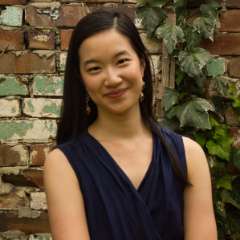Following its inaugural 2017 season, the second incarnation of Queensland Ballet’s Bespoke returned to the edgy Powerhouse Theatre. A multimedia emphasis was apparent before we even got to our seats. Hanging on the post-industrial walls of the Powerhouse alcoves and corridors were sculptural black-and-white photographs by the Walkley Award-nominated photographer David Kelly. This was Amy Hollingsworth’s Reserata, credited as the last item on the program: a photographic exhibition of the dancers caught on camera in personal interpretations of Arvo Pärt’s Fratres.
Meanwhile, LED screens mounted high on a column in the foyer broadcasted Cass Mortimer Eipper’s Brute, the program’s fifth item: a dance film (complete with a brief “making of” documentary) shot in a gritty catacomb of tunnels. The audience was shown the film again once inside the theatre, but something about its rawness and pounding soundtrack (Vessel’s Red Sex) made it far more engaging when set against the Powerhouse’s graffitied walls. Brute, which explores the “untameable beast within us”, is slick and vehement. The catacomb film set, rapid camera cuts, edgy angles, and sharp editing all augmented the visceral drive of Eipper’s choreography. As a piece of dance film it was excellent, and an example of how translation to another medium can enhance choreography rather than overwhelm it.
Once inside the theatre, the audience was invited to download the Weavar app and point it at their programs, which duly came to life with video and 3D models. Then it was time to put our phones away, and return to live dancing on a stage with Craig Davidson’s Parts per Million. A minimalist neoclassical piece, it explored “human behaviour patterns and the idea of change” through choreography that spoke of cause and effect in intricately detailed canons and beautifully formed spinning partnering. Lighting and shadow was used to great effect with light pieces being pushed around the stage to silhouette the dancers from different angles. Something about Davidson’s use of the movement planes of the body – over-extension of limbs, openness and alert bearing in torso and head, and swift pin-point precision in the placement of legs and feet on pointe – reminded me very much of William Forsythe (and in fact, Davidson has won a Critics Choice Award for his own performances of Forsythe). Particularly pleasing was a very beautiful sense of shape and line, a sophisticated flow of phrasing and rhythm, and a well-judged build to the springing, multi-layered climax set effectively to Nicholas Robert Thayer’s clock-like score. My only cavil was that the epilogue, an emotionally intimate pas de deux danced to a warm saxophone score, felt oddly disconnected from the cool sophistication of the rest of the work. Nevertheless, Davidson’s work is undeniably and thoroughly elegant. He is clearly a choreographer to watch.
Jack Lister’s 1960s-inspired B-Sides came next, and what a contrast it was with its pop colour palette, joyous celebration of sixties kitsch, and tongue-in-cheek tribute to those sixties dance moves! Cleverly, the work was presented as listening to a record of sixties hit pop songs, with each scene a new song phased in through the sound of a spinning vinyl record. Lister focused on relationships and emerging sexual identities, but the difficulty of combining this with angst-ridden pop ballads was that at times the choreography made the message a little too obvious. B-Sides featured Queensland Ballet’s Trainee Artist and Young Artists who brought obvious enjoyment and youthful energy to the kitsch humour. They could have explored more fully the poignant side of Lister’s message, but this may come with growing artistic maturity. On the whole, B-Sides gets points for pure colour and uninhibited fun.
The evening finished with Gabrielle Nankivell’s Carbon Field, a mesmerising work in which the dancers replicated the particle movements of carbon in all its states, from graphite to diamond. This was fascinating choreography – the dancers rolling, spinning, and moving in canon to reflect molecular chains, vibrations, and lattices. It called for clever use of the body, with disjointed angles, turns, and isolations making the movements inhuman and ingeniously scientific. There was a spectacular moment when all the dancers began vibrating rapidly from side to side, exactly like particles under a microscope. Set to Luke Smiles’ ambient soundscape, devoid of the ordinary musical cues, I was also impressed with the dancers’ awareness of each other’s breath and timing. Carbon Field also featured guest artists from Expressions Dance Company, as well as the Queensland Ballet Young Artists and Pre-Professional Program, and it was heartening to see the collaboration between various styles and levels.
Bespoke looks likely to be established as an annual fixture in the company’s program. As the evening’s diversity showed, it is an important vehicle for fostering experimental or upcoming Australian choreographers and performers.


